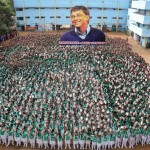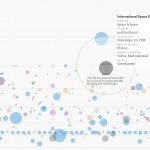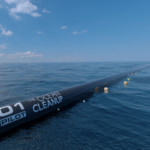Hackers Manage To Run Linux On a Nintendo Switch
Romain Dillet reports via TechCrunch: Hacker group fail0verflow shared a photo of a Nintendo Switch running Debian, a distribution of Linux. The group claims that Nintendo can't fix the vulnerability with future firmware patches. According to fail0verflow, there's a flaw in the boot ROM in Nvidia's Tegra X1 system-on-a-chip. When your console starts, it reads and executes a piece of code stored in a read-only memory (hence the name ROM). This code contains instructions about the booting process. It means that the boot ROM is stored on the chip when Nvidia manufactures it and it can't be altered in any way after that. Even if Nintendo issues a software update, this software update won't affect the boot ROM. And as the console loads the boot ROM immediately after pressing the power button, there's no way to bypass it. The only way to fix it would be to manufacture new Nvidia Tegra X1 chips. So it's possible that Nintendo asks Nvidia to fix the issue so that new consoles don't have this vulnerability. Read more of this story at Slashdot.
Unscrambling an Android Telephone With FROST
Noryungi writes "Researchers at the University of Erlangen demonstrate how to recover an Android phone confidential content, with the help of a freezer and FROST, a specially-crafted Android ROM. Quite an interesting set of pictures, starting with wrapping your Android phone in a freezer bag." Read more of this story at Slashdot.
18 months after discovery, the “Nintendo PlayStation” is finally working
In the nearly 18 months since a CD-ROM-based "Nintendo PlayStation" prototype was first found in an estate sale , emulator makers and homebrew programmers have created a facsimile of what CD-based games would look like on an SNES . Efforts by hacker Ben Heck to get that kind of software actually working on the one-of-a-kind hardware, though, had been stymied by problems getting the CD-ROM drive to talk to the system. Those problems are now a thing of the past. In a newly posted video , Heck lays out how the system's CD-ROM drive suddenly started sending valid data to the system literally overnight. "I was working on this yesterday and the CD-ROM wasn't even detecting the disc," Heck says in the video. "I came in this morning and jiggled the cables around and got ready to work on it some more, and all of a sudden it works... did a magic elf come in overnight?" Read 5 remaining paragraphs | Comments
Interactive map of every satellite in orbit
David Yanofsky and Tim Fernholz created an interactive chart showing the weight, national origin and position of more than 1,300 active satellites orbiting the planet Earth. The data was sourced from the Union of Concerned Scientists . It goes out in bands: there's a cloud in low-earth orbit bulked up with the International Sapce Station and surveillance satellites. Satellite phone networks such as Iridium and Globalstar form conspicuous rings about 800 and 1500 km up. 20km up are the navigation networks GPS and Glonass. 37km up is a mess, with so many geostationary satellites clustered together that they become a rainbow blur in the graphic.
50 floating screens will clean the Pacific garbage patch next year
The Ocean Cleanup , a Dutch foundation that aims to deal with plastics polluting our seas, says it's finally ready to put its technology to work. In a statement released today, the organization has revealed that it plans to start cleaning up the Great Pacific Garbage Patch in early 2018 using its newly redesigned cleaning system. That garbage patch is the biggest collection of debris in the ocean, a massive soup of visible and microscopic plastic particles poisoning marine life. The ship captain who discovered it in 2003 said he "never found a clear spot" in the week it took to cross the region. While Boyan Slat (the organization's founder) originally envisioned trapping plastic trash with one large screen tethered to the ocean floor, the new design is smaller, sturdier and can save the group a ton of money. Instead of deploying a 60-mile stationary screen, they plan on releasing 50 smaller ones that measure 0.6 miles in length. They'll weigh the floating screens down with anchor, so they can move with the currents like plastics do, albeit a bit slower in order to trap debris. Slat told FastCompany that he expected the original design to clean up half of the massive garbage patch in 10 years for $320 million. Now, he expects the new design to cut that timespan in half and to cost the group significantly less than that amount. Since he and his team still need to fund the project, though, they plan to use the plastic they collect to make items they can sell, such as sunglasses, chairs and car bumpers. Source: The Ocean Cleanup
Germany Sets New National Record With 85 Percent of Its Electricity Sourced From Renewables
Germany was able to set a new national record for the last weekend of April with 85 percent of all electricity consumed in the country being produced from renewables -- wind, solar, biomass, and hydroelectric power. Digital Trends reports: Aided by a seasonal combination of windy but sunny weather, during that weekend the majority of Germany's coal-fired power stations weren't even operating, while nuclear power stations (which the country plans to phase out by the year 2022) were massively reduced in output. To be clear, this is impressive even by Germany's progressive standards. By comparison, in March just over 40 percent of all electricity consumed in the country came from renewable sources. However, while the end-of-April weekend was an aberration, the hope is that it won't be for too much longer. According to Patrick Graichen of the country's sustainability-focused Agora Energiewende Initiative, German renewable energy percentages in the mid-80s should be "completely normal" by the year 2030. Read more of this story at Slashdot.
New Windows look and feel, Neon, is officially the “Microsoft Fluent Design System”
Enlarge / Project Neon in the Groove Music app. (credit: Tom Hounsell ) SEATTLE—Earlier this year, pictures of a new Windows look and feel leaked . Codenamed Project Neon , the new look builds on Microsoft Design Language 2 (MDL2), the styling currently used in Windows 10, to add elements of translucency and animation. Neon has now been officially announced, and it has an official new name: the Microsoft Fluent Design System. The awkward MDL2 name exists because the original codename for the geometric, text-centric style introduced with Windows Phone 7 and incrementally iterated ever since was subject of a trademark dispute. That look and feel was internally named Metro, but Microsoft had to stop using the Metro name after pushback from a German supermarket chain . The company didn't initially have any particularly good name to refer to the styling formerly known as Metro, so many people continued to use that term for lack of anything better. It wasn't until a couple of months after dropping "Metro" that a new name, "Microsoft Design Language," was settled on. Our understanding is that Neon befell a similar fate; someone out there is using the Neon name, forcing Microsoft to pick a different appellation. This time around, however, the company has recognized that it's important to have an official name for the style that it can talk about and describe, giving us "Microsoft Fluent Design System." Read 6 remaining paragraphs | Comments
Only 36 Percent of Indian Engineers Can Write Compilable Code, Says Study
New submitter troublemaker_23 quotes a report from ITWire: Only 36% of software engineers in India can write compilable code based on measurements by an automated tool that is used across the world, the Indian skills assessment company Aspiring Minds says in a report. The report is based on a sample of 36, 800 from more than 500 colleges across India. Aspiring Minds said it used the automated tool Automata which is a 60-minute test taken in a compiler integrated environment and rates candidates on programming ability, programming practices, run-time complexity and test case coverage. It uses advanced artificial intelligence technology to automatically grade programming skills. "We find that out of the two problems given per candidate, only 14% engineers are able to write compilable codes for both and only 22% write compilable code for exactly one problem, " the study said. It further found that of the test subjects only 14.67% were employable by an IT services company. When it came to writing fully functional code using the best practices for efficiency and writing, only 2.21% of the engineers studied made the grade. Read more of this story at Slashdot.
NIST’s Draft To Remove Periodic Password Change Requirements Gets Vendors’ Approval
An anonymous reader writes: A recently released draft of the National Institute of Standards and Technology's digital identity guidelines has met with approval by vendors. The draft guidelines revise password security recommendations and altering many of the standards and best practices security professionals use when forming policies for their companies. The new framework recommends, among other things: "Remove periodic password change requirements." There have been multiple studies that have shown requiring frequent password changes to actually be counterproductive to good password security, said Mike Wilson, founder of PasswordPing. NIST said this guideline was suggested because passwords should be changed when a user wants to change it or if there is indication of breach. Read more of this story at Slashdot.
Rare Harry Potter Prequel Stolen, J.K. Rowling Pleads for Return
A one-of-a-kind Harry Potter prequel has been stolen, and author J.K. Rowling is eager to get it back in the right hands. Read more...









